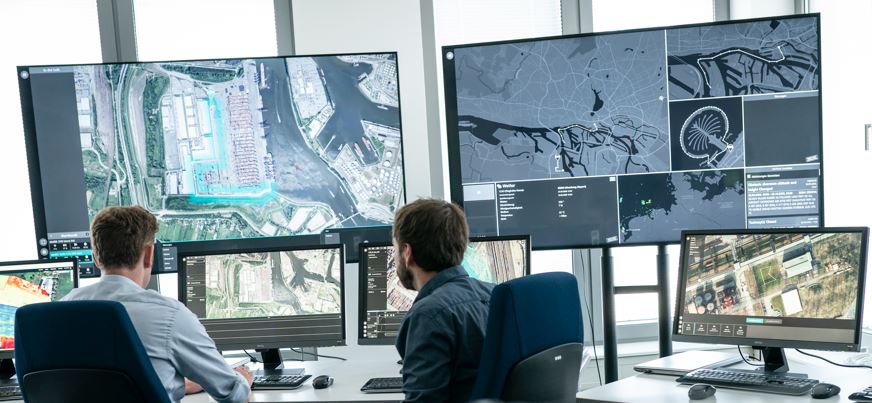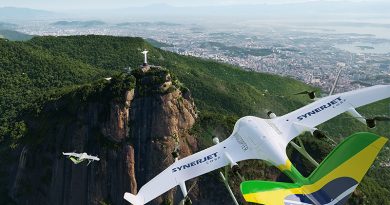Enhancing automated drone inspection through superior image quality: a technological leap forward
In the realm of modern industry, technological advancements are driving transformative shifts in how we approach various processes, including asset inspection. Automation has emerged as a game-changing force, with automated drone inspection a pivotal innovation, revolutionising the way we monitor and maintain critical infrastructure from wind turbines, to towers and bridges, and more.
As industries seek more efficient, accurate, and cost-effective ways to monitor and maintain their assets, the role of unmanned and fully automated drones equipped with high-quality imaging systems cannot be overstated. While automation itself has brought efficiency and accuracy to inspection processes, the quality of images captured by these drones elevates the impact and effectiveness of this technology.

Historically, asset inspection was a labour-intensive and time-consuming process. Human inspectors would be required to access hard-to-reach areas, often putting themselves at risk, and collect data through manual measurements and visual observations. At Sony, we are seeing how the use of drones equipped with cutting-edge image capture capabilities and software development kits (SDKs) are redefining the industrial inspection sector. Automated drone inspection enables remote monitoring and assessment of assets, eliminating the need for physical presence while drastically reducing inspection timeframes.
This is where image quality comes to the forefront. High-resolution cameras mounted on automated drones have the capability to capture intricate details that might otherwise remain unnoticed – from hairline cracks on structural components to subtle signs of wear and tear.
This precision is particularly valuable when it comes to industries like transportation, manufacturing, and energy, where even the slightest defect or anomaly can have far-reaching consequences. If undetected, compromised supports or malfunctioning equipment can lead to safety hazards, operational disruptions, and financial losses. High-quality image capture enables inspectors to detect these issues early on, preventing failures and ensuring timely maintenance.
Supporting the precision of the quality of images captured in automated drone inspection is the use of SDKs which simplifies the process and gives users access to granular control of the equipment. SDKs allow for seamless integration of drones and cameras, along with other software and hardware components such as sensors and data analysis tools. This means inspectors have the ability to choose when and where images are taken, with all information stored, processed, and easily accessible from an integrated database.
Remote inspection is becoming the norm in industries where assets are scattered across vast and remote landscapes. Traditional methods often required inspectors to travel long distances, which could be time-consuming, costly, and even hazardous. Automated drone inspection combats these challenges, allowing the experts to remotely examine assets in detail without leaving their offices, saving time and resources, and minimising the safety risks associated with on-site inspections.
With the ability to capture clear and detailed images from various angles, automated drones equipped with high-quality cameras provide remote inspectors with an accurate visual representation of the asset’s condition. This allows them to diagnose problems and recommend solutions through informed decision-making supported by the data captured by the drones.
In the era of data-driven decision-making, the insights derived from automated drone inspection play a crucial role in shaping operational strategies. High-quality images provide a wealth of information that can be harnessed through advanced analytics and machine learning (ML) algorithms. These technologies can identify patterns, predict potential issues, and optimise maintenance schedules, all based on the visual data collected by drones.
By analysing images over time, inspectors can identify areas prone to deterioration, predict when maintenance is needed, and strategically allocate resources to prevent outages. This proactive approach to asset management enhances operational efficiency and extends the lifespan of the structure itself. SDKs can be used to further speed up this process through automated data processing and analysis, and allow for remote monitoring of any maintenance and installations.
The images provided by automated drone inspections also facilitate effective communication between teams for deeper understanding and stakeholder collaboration. Whether it is sharing findings with maintenance teams, discussing issues with regulators, or presenting insights to executives, high-quality images offer a common visual language that transcends the barriers of technical jargon.
By providing a clear and vivid depiction of the asset’s condition, these images enable different parties to quickly understand the situation, align their perspectives, and collectively decide on the most appropriate course of action. This streamlined communication not only expedites decision-making but also ensures that everyone involved has a comprehensive understanding of the asset’s status.
Automated drone inspection combined with high-quality image capture has ushered in a new era of efficiency, accuracy, and safety in asset management. From precise defect detection to remote inspection capabilities, and data-driven insights to enhanced collaboration and communication, automated drone inspection offers unparalleled benefits.
As industries continue to rely on automated drones for asset monitoring and maintenance, the focus on advancing imaging technologies will remain paramount, however. The ongoing pursuit of superior image quality will enable industries to unlock deeper insights, make more informed decisions, and ensure the longevity and safety of critical infrastructure. In the ever-evolving landscape of automation, image quality and delivery remain crucial – it is the lens through which we gain crystal-clear insights into the future of asset management.

Matt Swinney, Head of Image Sensing Solutions, SES, and Specialised Business Unit, Sony Europe




